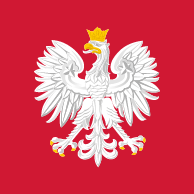Who can be a worker and who can be an employer
Learn about the basic concepts relating to the labour law. Find out who a worker and an employer are and what is meant by an employment relationship. Find out about the characteristics of an employment relationship.
The concept of a worker
A worker, as defined by the Labour Code, is a person employed on the basis of an employment contract, appointment, election, designation or a cooperative employment contract.
A worker may be:
- a natural person who has reached the age of 18
- a natural person under the age of 18, under the conditions specified in the Labour Code for the employment of adolescent workers
- a natural person who has limited legal capacity, unless the employment relationship is harmful to that person.
The employment of persons under the age of 15 is prohibited. The labour law allows the performance of work and other gainful activities by children on special terms and subject to certain additional conditions.
The concept of an employer
An employer may be a legal person (for example, a public limited company), an organisational unit (for example, a branch of a legal person or a company), with or without legal personality, and a natural person who employs workers. Thus, an entity which assigns work to another natural person (employs that natural person) within the framework of an employment relationship, including a natural person, will have the status of an employer.
Employment relationship
An employment relationship is a legal link between an employer and a worker, whereby the worker undertakes to perform a specific type of work for the employer and under that employer’s direction, at a place and time designated by the employer, and the employer undertakes to employ the worker in exchange for remuneration.
An employment relationship may be based on:
- a contract: an employment contract or a cooperative employment contract
- appointment or designation
- election.
If you are not certain whether the relationship concerned is an employment relationship, check whether it has the following characteristics:
- a specific type of work is performed by a subordinate entity (under the employer’s direction)
- the work is performed at a place and time designated by the employer
- the work is performed by the worker in exchange for remuneration (for consideration)
- the worker performs the work by himself or herself
- the work is performed in a continuous and repeated manner
- the economic and technical risk associated with the work performed by the worker is borne by the employer.
Please note Work assigned under these conditions is regarded as employment within the framework of an employment relationship, regardless of the name of the agreement between the parties.

